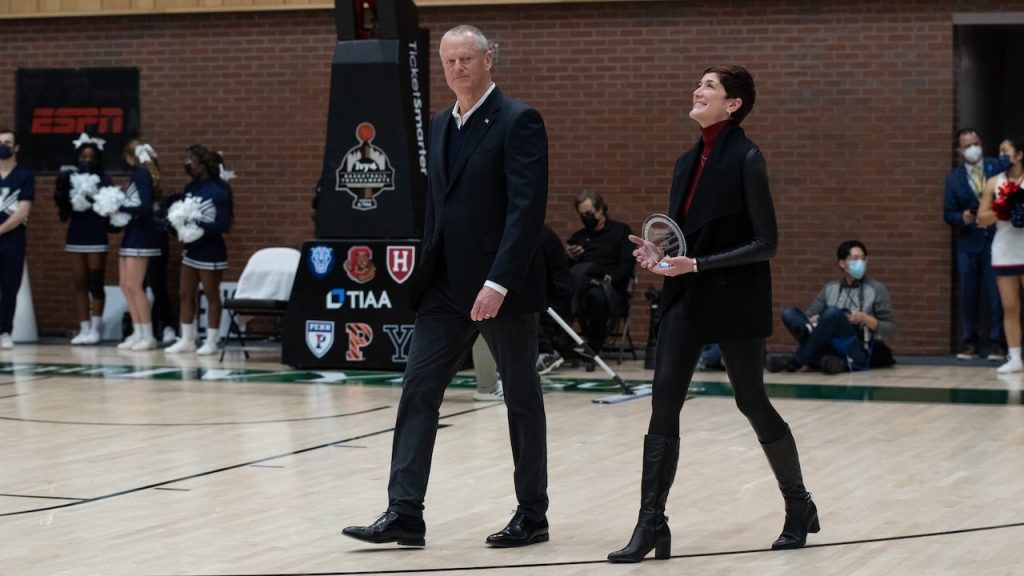The NCAA’s stance on transgender athletes competing in women’s sports has ignited a firestorm of controversy, with NCAA President Charlie Baker finding himself at the center of the debate. Baker’s recent appearances, both before a Senate hearing and on ESPN’s “The Pat McAfee Show,” have further fueled the discussion, with critics arguing his responses minimize the concerns of female athletes and their families while proponents praise his commitment to inclusivity and adherence to legal precedents. The core of Baker’s defense rests on the relatively small number of transgender athletes competing at the NCAA level – less than ten out of a total of 510,000 athletes. This statistic, while factually accurate, has been met with criticism for seeming to dismiss the legitimate concerns of female athletes who feel their opportunities and safety are being compromised. Baker’s suggestion that female athletes uncomfortable sharing locker rooms with transgender athletes should utilize alternative facilities has also drawn ire, with critics arguing it places the burden of accommodation on female athletes rather than addressing the underlying issue.
Baker’s justification for the NCAA’s current policies hinges on recent court rulings, which he claims have consistently favored the inclusion of transgender athletes in women’s sports. He has referenced five such rulings in recent public statements, although specifics about these cases remain somewhat ambiguous. One identified case involves transgender volleyball player Blaire Fleming, who was permitted to compete in the Mountain West Tournament following a judge’s rejection of an emergency injunction filed by other players. However, this ruling focused narrowly on the tournament’s immediate circumstances and did not offer a broader legal precedent on transgender athlete inclusion. The lack of clarity regarding the other cited cases further complicates the issue, leaving open the question of whether they truly represent a widespread legal trend supporting the NCAA’s position.
Furthermore, the debate extends beyond legal technicalities and delves into the complex and emotionally charged realm of fairness and the biological differences between men and women. Critics argue that allowing transgender women, who have undergone male puberty, to compete in women’s sports creates an uneven playing field due to inherent physiological advantages. They point to potential impacts on scholarships, competitive balance, and the overall integrity of women’s sports. Proponents, on the other hand, emphasize the importance of inclusivity and the right of transgender athletes to participate in sports without discrimination. They argue that excluding transgender women would be discriminatory and harmful, and that policies should prioritize inclusivity and create a welcoming environment for all athletes.
The NCAA’s current policy, which essentially defers to individual sports and conferences to regulate transgender athlete participation, has been criticized for its lack of a clear and consistent national standard. This has led to a patchwork of differing rules and regulations across the country, further contributing to the confusion and controversy. Baker has acknowledged the need for a federal standard on the issue, expressing his willingness to work with lawmakers to create a uniform policy. This call for federal intervention highlights the complexities of the issue and the challenges faced by organizations like the NCAA in navigating the rapidly evolving legal and social landscape surrounding transgender rights.
The interview with Pat McAfee on ESPN added another layer to the ongoing debate. McAfee, while expressing his personal concerns about the impact of transgender athletes on women’s sports, ultimately praised Baker’s handling of the situation and his transparency. This seemingly contradictory stance underscores the divided public opinion on the issue, with even those who express reservations about transgender inclusion acknowledging the complexities and challenges involved in finding a satisfactory solution. McAfee’s previous comments on the inherent physical advantages men possess in sports, coupled with his expression of support for Baker, further highlight the nuanced and often conflicting perspectives surrounding this contentious issue.
The NCAA’s handling of transgender athlete participation remains a highly sensitive and complex issue with far-reaching implications. The debate involves balancing the rights and concerns of all athletes, while navigating evolving legal interpretations and societal expectations. Baker’s defense of the NCAA’s current policies, while emphasizing inclusivity and adherence to legal precedent, has failed to quell the concerns of many who believe that the organization needs to do more to protect the integrity of women’s sports and ensure a level playing field for all athletes. The lack of a clear federal standard has created a fragmented landscape of regulations, adding to the confusion and underscoring the need for a comprehensive and consistent national policy that addresses the complex and often conflicting interests at play. The ongoing dialogue and debate will undoubtedly continue to shape the future of collegiate athletics and the broader conversation surrounding transgender rights in sports.

